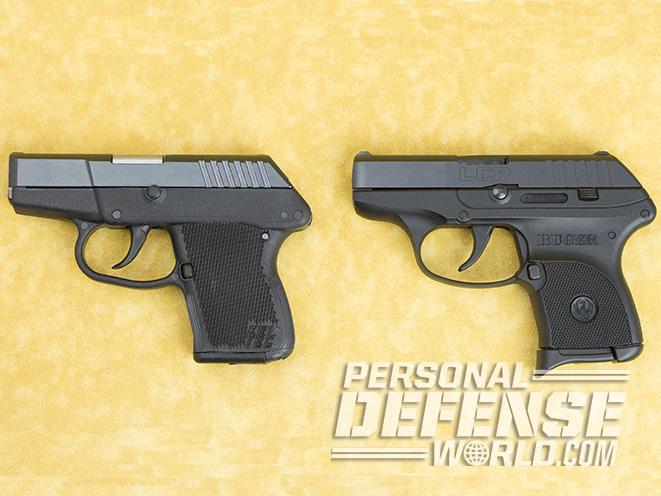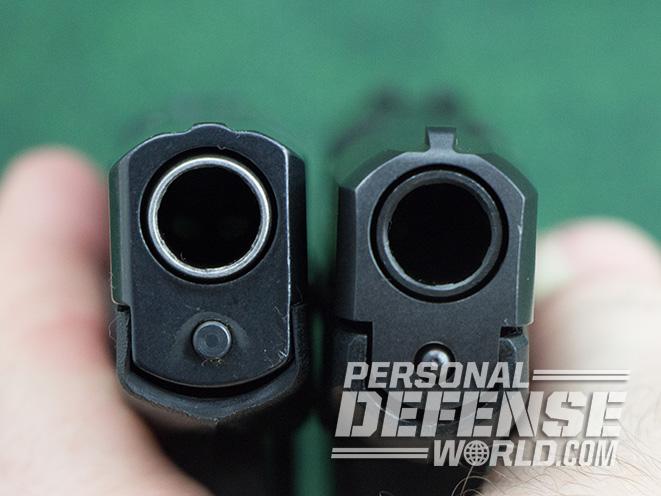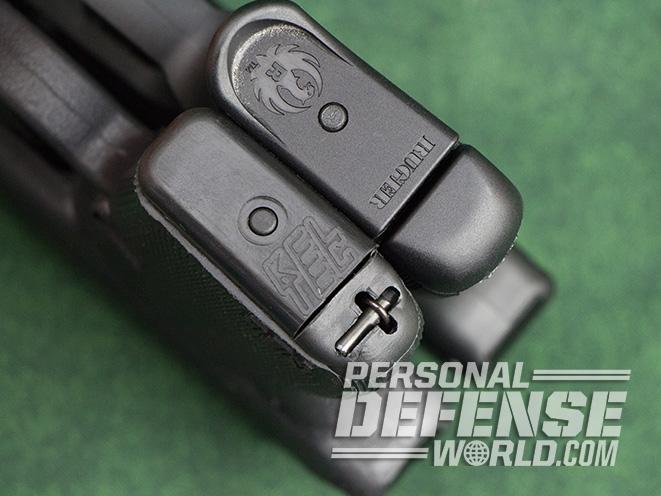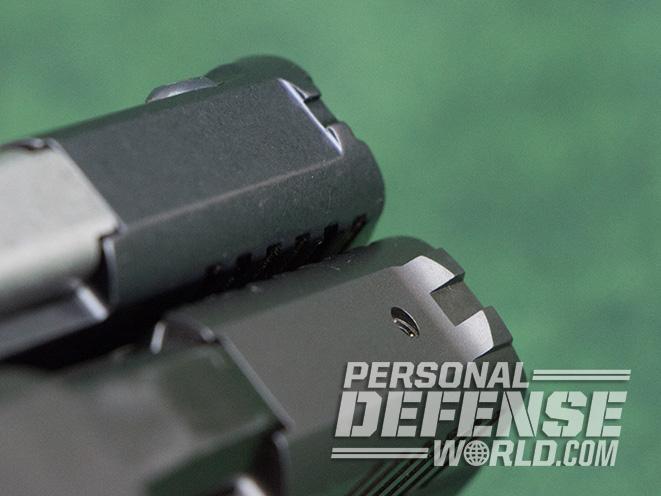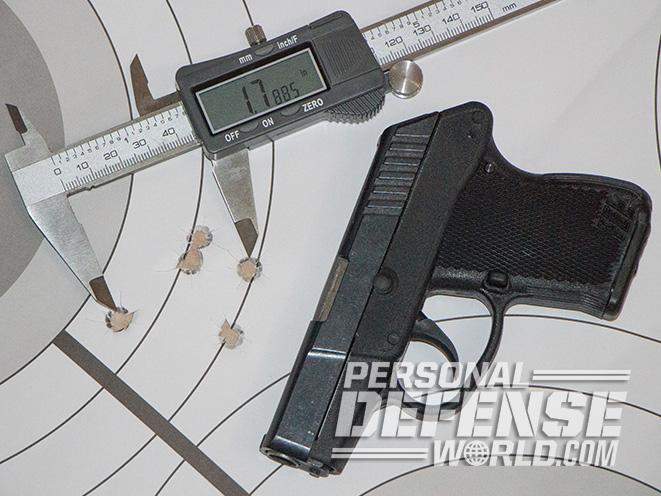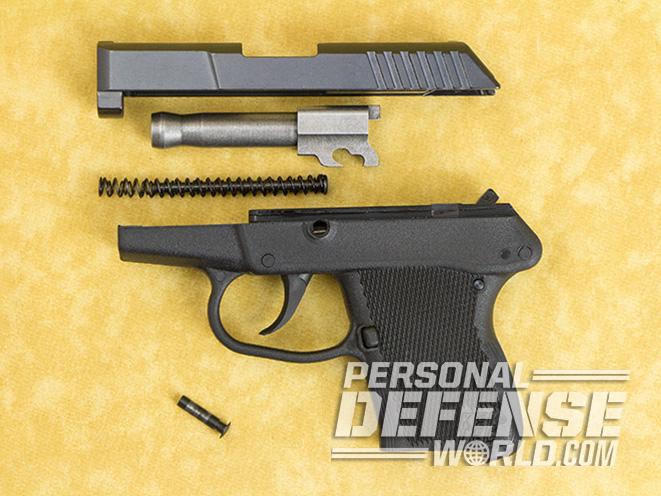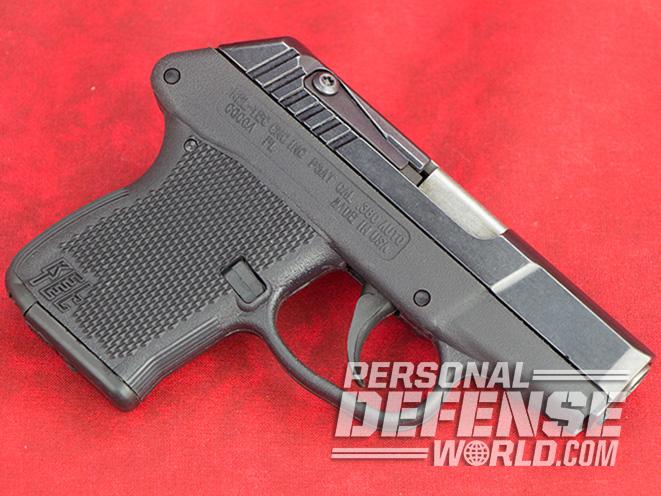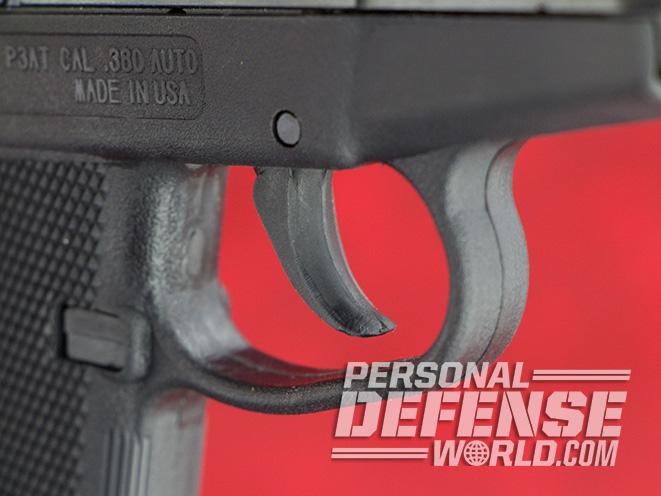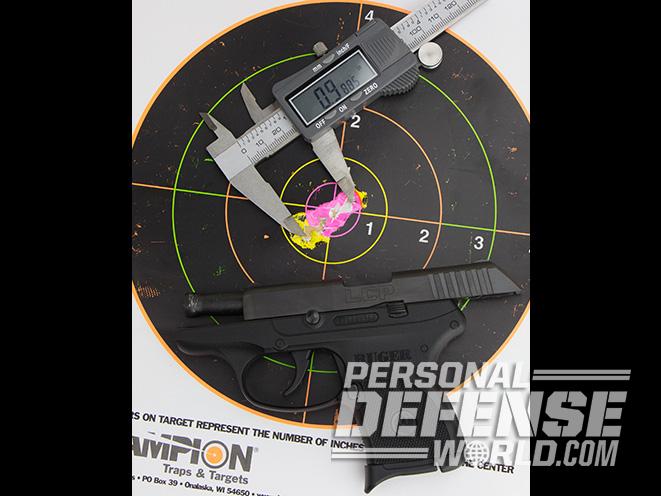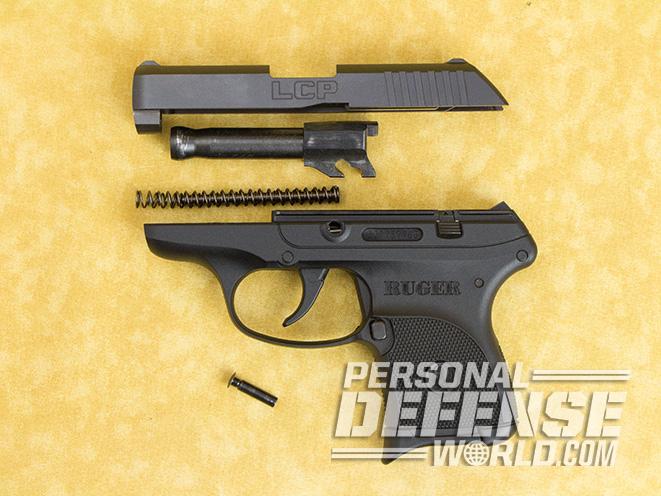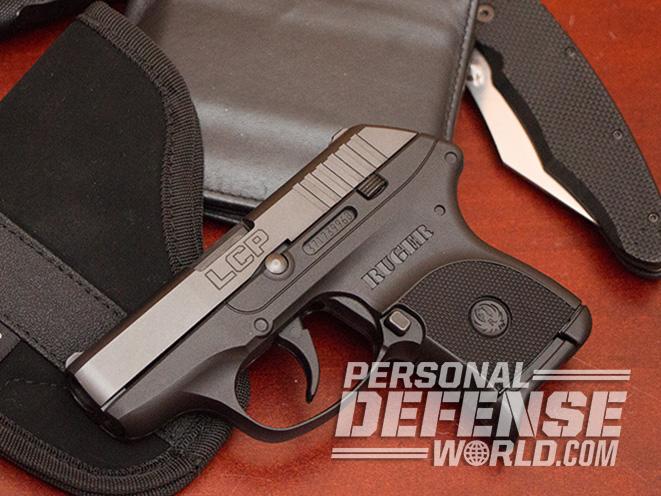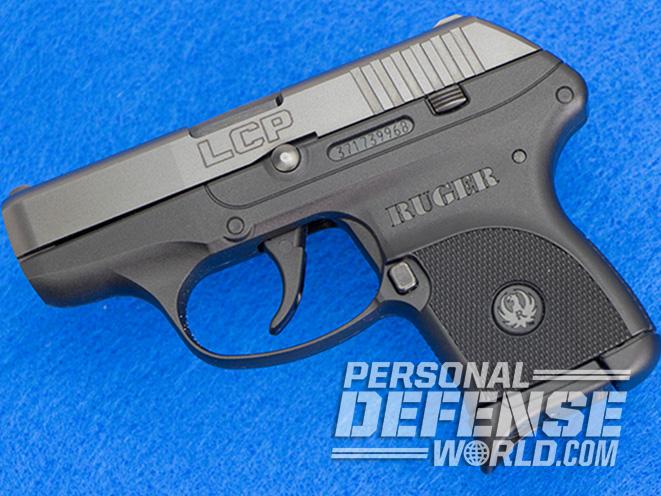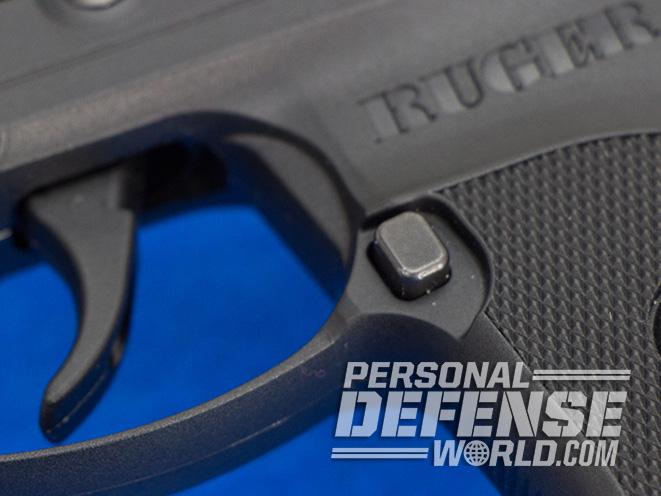From coast to coast, rioting, terrorism and violent crime have gripped the United States in recent months. It is a perfectly reasonable response for free citizens to take responsibility for their own survival in these uncertain times. Consequently, self-defense continues to be a major reason for people buying handguns.
For many people, finding a gun that fits their lifestyle is important. This often means finding a gun that is small enough to conceal in business or other attire that does not allow for an untucked shirt or the clichéd photographer’s vest. For these shooters, a light, flat handgun can make a lot of sense.
Two popular weapons that make sense for many concealed carriers are the Kel-Tec P-3AT and Ruger LCP. Both guns are lightweight pistols chambered for a respectable self-defense cartridge and can be carried discreetly in almost any style of dress.
Advertisement — Continue Reading Below
I decided to see if, in my opinion, one was a better choice than the other for the purposes of concealed carry and self-defense. Kel-Tec and Ruger each shipped me a gun to test, and I’ve spent nearly two months with both of them. After examining, carrying and shooting them, I came to a clear decision on which one I believed to be a superior weapon. But first, let’s take a closer look at the general characteristics of both of the guns.
The Contenders
The Kel-Tec P-3AT is a small and flat .380 ACP pistol that holds six rounds in its magazine. It is hammer fired and uses a double-action-only (DAO) trigger system. The stated trigger pull weight is 5 pounds.
Unloaded, the gun weighs a mere 8.3 ounces. With a 2.7-inch barrel and stated thickness of only 0.77 inches, this gun is easy to conceal in a pocket or waistband. The gun is made in the U.S. while the magazine included with my test gun was manufactured by Mec-Gar in Italy.
Advertisement — Continue Reading Below
- RELATED STORY: Gun Review – Kel-Tec’s Ultra-Lightweight PMR-30
Also chambered for the .380 cartridge, the Ruger LCP packs 6+1 rounds of your favorite defensive load. Like the Kel-Tec pistol, this handgun is a hammer-fired DAO. Ruger’s pistol is roughly the same size as the P-3AT with a width of 0.82 inches and a barrel length of 2.75 inches. The LCP is slightly heavier at 9.6 ounces. Even so, a sub-10-ounce gun is a featherweight. Both the gun and provided magazine are made in the U.S.
With such comparable specifications, the only way to really compare these guns was to hit the range.
Reliability
For a defensive handgun, reliability is an absolute must. I’ve found that full-sized handguns will often run reliably out of the box, but small guns can still need a bit of breaking in before carrying. So, I shot 400 rounds through each pistol. Many of those rounds—roughly 150—were self-defense loads using hollow-point bullets.
Advertisement — Continue Reading Below
With the Ruger, I experienced one malfunction at about the 50-round mark with a 95-grain FMJ load. After firing a round, the next one in the magazine seemed to hang up on the feed ramp. Running the slide chambered the round, and I experienced no malfunctions after that.
Unfortunately, while shooting FMJ rounds through the Kel-Tec P-3AT, I had three separate incidents where the ammunition appeared to hang up on the feed ramp. Each instance was solved by simply racking the slide.
Advantage: Ruger
Advertisement — Continue Reading Below
Trigger Pull
Both guns are DAOs with relatively long trigger pulls. Of the two, the Ruger has a shorter pull with a slightly lighter feel. Averaging five pulls, my Lyman trigger pull gauge measured the Ruger’s pull at 7.75 pounds and the P-3AT’s at 8.35 pounds. Both are smoother than I have experienced with some other micro-pistols.
Advantage: Ruger
Accuracy
Accuracy goes hand in hand with reliability. After all, if you cannot hit what you need to, what good is having the gun? One of the biggest advantages that the Ruger has in terms of accuracy is its sights. On the base model LCP, the sights are substantially larger than those on the P-3AT. In my opinion, the sights on the Ruger pistol are marginal for a defensive pistol. However, the sights on the Kel-Tec pistol are nearly non-existent.
Advertisement — Continue Reading Below
When shooting indoors, I could not even see the front sight unless I held the gun directly under a bright light. For nearly all of the P-3AT shooting, I could only clearly distinguish the rear sight. For any kind of shooting under stress, I would not expect anyone to be able to use the P-3AT sights. The Ruger sights are small but usable.
I suspect that the difference in the sights accounted for the difference in accuracy between the two pistols. The best group from the LCP was a hair under an inch at 7 yards. For the Kel-Tec, the best group was about 0.75 inches larger at the same distance.
Kel-Tec P-3AT Performance
Advertisement — Continue Reading Below
| Load | Velocity | Accuracy |
|---|---|---|
| Hornady 90 Critical Defense FTX | 878 | 1.79 |
| Winchester 95 PDX1 Defender JHP | 886 | 2.19 |
| Winchester 95 Train FMJ | 835 | 2.03 |
Ruger LCP Performance
| Load | Velocity | Accuracy |
|---|---|---|
| Hornady 90 Critical Defense FTX | 891 | 1.46 |
| Winchester 95 PDX1 Defender JHP | 902 | 0.99 |
| Winchester 95 Train FMJ | 835 | 1.89 |
*Bullet weight measured in grains, velocity in fps by chronograph and accuracy in inches for best five-shot groups at 7 yards.
Advantage: Ruger
Advertisement — Continue Reading Below
Felt Recoil
The .380 ACP cartridge does not generate nearly as much felt recoil as larger rounds like the 9mm. However, when shot from tiny, lightweight guns, the recoil is not as mild as one might otherwise expect. Frankly, neither of these guns would be suitable for introducing someone to shooting.
Both guns are thin, meaning that the majority of the felt recoil is directed into a narrow portion of the hand. A wider grip would spread out the impulse, making the recoil less sharp. However, a wider grip would also remove one of the biggest selling points on these guns: thinness.
The Kel-Tec’s recoil felt slightly sharper to me, and the gun seemed to have more muzzle rise in a side-by-side comparison. Looking at the backstraps of the two guns, the P-3AT seems to have a more rounded top to the backstrap while the LCP appears to be flatter on the rear-facing material. It is possible that the wider nature of the backstrap face on the LCP helps spread recoil slightly.
Advertisement — Continue Reading Below
Ruger includes a finger extension for the LCP’s magazine floorplate that helps with recoil. This floorplate adds about a quarter-inch to the front edge of the grip. With the finger extension on the LCP, I am able to wrap all of my index and middle fingers around the gun. On the P-3AT, I am able to only get about half of my middle finger on the pistol. With so little grip area to begin with, I suspect that extra half-finger width helps with reducing how far the muzzle rises after each shot.
Advantage: Ruger
Concealed Carry
One of the main reasons that people look at these guns is because of their diminutive nature. Without a doubt, it is very easy to slip one of these into a pocket and discreetly carry everywhere you go. I’ve carried a J-Frame revolver in a front pocket for many years of my adult life. While I still like my old .38 Special, the flatness of these two pistols is very appealing.
Both of these guns are similar in size and weigh less than 10 ounces unloaded. I carried both in a pocket holster during my testing and did not find that one outperformed the other.
Advantage: Toss-up
Fit & Finish
Beauty is always in the eye of the beholder, so take my personal opinions with a grain of salt. The workmanship and overall look and feel (especially considering the polymer gun parts) appeared better with the Ruger LCP. The mold seams on the LCP frame were visible, but not distracting. Additionally, the seams were almost universally flush to give the pistol a relatively smooth feel. All of the LCP’s pins were either flush with the frame or sunk slightly below the frame, giving them a very uniform appearance.
Conversely, the P-3AT seams were pronounced and rough. Almost all of the Kel-Tec P-3AT’s pins were flush save one on the left side of the frame that was tall enough to be even with the top of the grip texture.
Advantage: Ruger
Other Concerns
In my opinion, one of the flaws in the P-3AT design is the lack of a slide stop. This prevents you from locking the slide to the rear. Ruger built a slide stop into the LCP that worked perfectly. The design of the LCP’s slide stop does not lock the slide open when the last round is fired from a magazine, but it is engaged manually. While not ideal, I still find the ability to lock the slide open for clearing double-feeds and administrative purposes to be a significant advantage.
- RELATED STORY: Remastered Ruger LCP .380 – A Look at the LCP II
Unlike Ruger, Kel-Tec includes a hard plastic case with the P-3AT pistol. The LCP ships in a cardboard box. While there is nothing wrong with the box, a hard plastic care is a nice extra. It is not useful enough, however, to overcome the usable slide stop built into the Ruger LCP.
Advantage: Ruger
Value
For me, value is a function of price versus performance. An inexpensive gun that is not reliable is no value at all. Shooting both guns, I found the Ruger to be both more reliable and easier to shoot than the P-3AT. When you factor in the suggested retail prices of both guns, $259 for the Ruger versus $338 for the Kel-Tec, there really isn’t any doubt in my mind that the LCP is the better value.
Advantage: Ruger
The Verdict
In my opinion, the clear winner is the Ruger LCP. In a feature-by-feature comparison of the two guns, I see little that makes the Kel-Tec P-3AT more desirable than the Ruger LCP.
Kel-Tec P-3AT & Ruger LCP Specs
| Manufacturer | Kel-Tec P-3AT | Ruger LCP |
|---|---|---|
| Caliber | .380 ACP | .380 ACP |
| Barrel | 2.7 inches | 2.75 inches |
| OA Length | 5.2 inches | 5.16 inches |
| Weight | 8.3 ounces (empty) | 9.6 ounces (empty) |
| Grip | Polymer | Glass-filled nylon |
| Sights | Fixed | Fixed |
| Action | DAO | DAO |
| Finish | Matte black | Matte black |
| Capacity | 6+1 | 6+1 |
| MSRP | $338 | $259 |
For More Information
Kel-Tec
keltecweapons.com
Ruger
ruger.com
